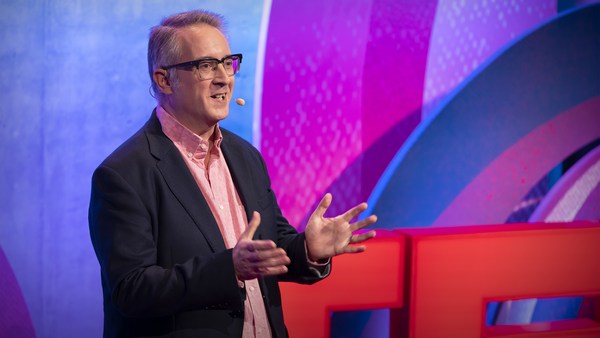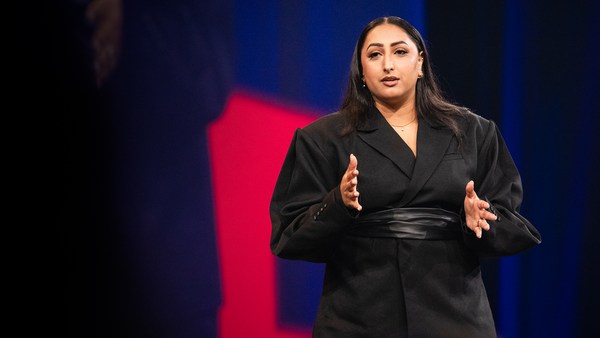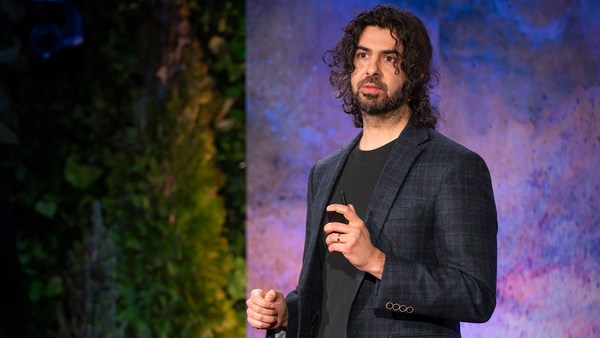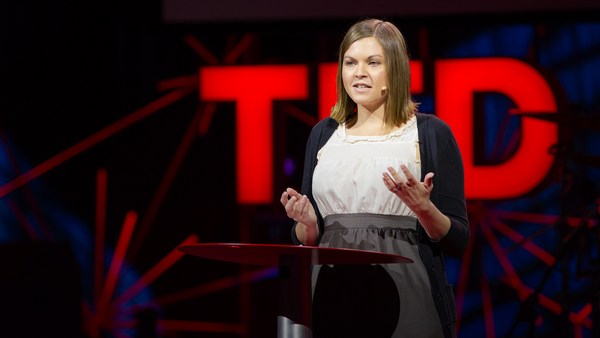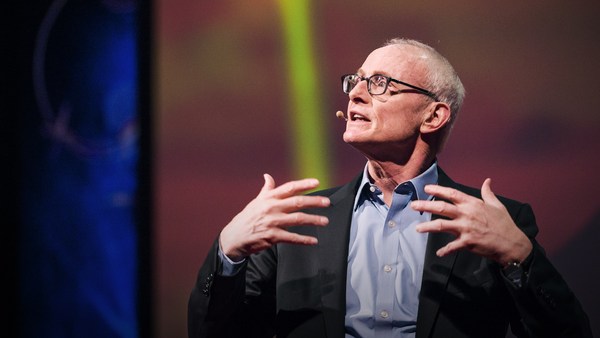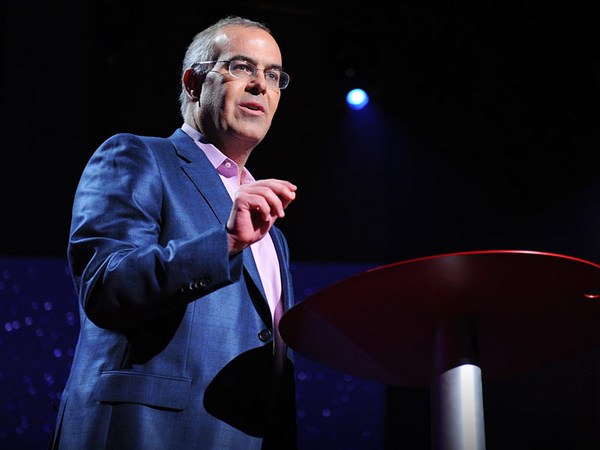When I was a kid, I remember feeling terrified during classes when the teacher would launch a stealth attack called oral pop quiz. Oh, I can still feel the sweat in my hands and how fast my heart was beating. And I remember also how relieved I was when my name was not called out that day. I was deeply afraid of looking stupid or not having the right answer. And it felt like the entirety of my character was being assessed in those dreadful five minutes.
When I look back, I realize that feeling was not only present during the pop quizzes. It was present the entire time. So if I didn't understand something, instead of asking, I used to think, "Just shut your mouth and you can ask a friend later."
This fear of looking inadequate or below average haunted me for a long, long time. And it took me years to realize that I was not alone in that feeling. It turns out, many grown ups feel like that too.
In April 26 of 1986, a team of terrified, tired, overworked engineers were trying to desperately solve a problem with reactor number four of the Chernobyl nuclear plant after a disastrous emergency exercise. When approaching the director, they were received with yelling and threats.
Now, fast forward to around June of 2018, and after seeing many of his coworkers burning out due to an overwhelming work schedule, and also knowing that this could lead to potentially fatal errors, Ed Pierson, one of the senior managers at Boeing for the 737 Max project, decided to break the silence. Go to the bosses, straight to the top. Nobody listened. And almost a year later, more than 300 people died in two separate 737 Max accidents. Ed also mentioned later on how stifling the culture was, and it was silencing most of the concerned employees.
When working with a client a few years ago, I remember seeing on the wall an impeccable record of health and safety awards. I saw four years in a row they won the award, but nothing after that. So I asked the CEO what happened. To which he only replied, "Oh, we learned a lesson."
So his management team became so obsessed with winning the award that the most important thing they could do was to check all the boxes. So the following year, many employees were incapacitated or even died as a consequence of several workplace accidents. When talking to the employees, many of them said they could not report nonconformities to the managers, otherwise they would be ostracized or labeled as inefficient. So they took the only route possible. Fake the numbers to win the award.
See these stories, they all have something in common. Like me as a kid, these people were afraid of speaking up. And this is a clear symptom of a workplace lacking what scientists call psychological safety.
Psychological safety, as Professor Amy Edmondson very well puts it, is the belief that one will not be punished or humiliated for speaking up with ideas, suggestions, concerns, even mistakes. So as an organizational psychologist, it fascinates me the science behind this concept and how easy it is to notice the importance of it.
As a professor in higher education, I am constantly concerned with creating an environment where curiosity has a free flow and my students have a safe space to be creative. And as a consultant, working with large-scale organizational transformation, I constantly try to be the voice advocating towards more psychologically safe workplaces.
Now, I want you to try imagining working in a team where everyone has a voice. Your colleagues take their turn speaking, and more importantly, people actually listen to one another. They understand your talking points, they address them, ask for more explanation. Imagine you walk out of a meeting and the people there understood you were only talking about ideas. And because of that, they don't take personal offense. That is what working in a psychologically safe team would look like.
There is something very, very powerful about knowing that you can talk in a safe space. Also, knowing that people will listen to your ideas and consider them. Yet in a recent survey, workers confided that they did not feel safe speaking up at their workplaces. They were afraid of being labeled as dissenters or receiving negative feedback, or even lose their jobs.
Now think about it for a second, what are the consequences of that? How many ideas were discarded? How many suggestions never happened? How much innovation was lost? How many lives could have been saved if only people felt safe enough to speak up and ask questions?
Now some people might say, "Oh yeah, I do that all the time. Don't worry about me. I ask my team always, 'Do you want to say something?'" That is not that simple. There's a little misconception about how this works. To foster a psychologically safe environment, leaders must walk the walk and talk the talk. Sometimes they are great with words, but they forget to act on it.
So, for example, let's assume that a certain leader asks for their teams to speak up. But when listening to new ideas, different ideas, they instantly become defensive or very territorial about their own position. Well, they are sending a powerful implicit message: "Just shut up."
I call this the whack-a-mole culture. You know that fun arcade game where kids must whack the moles in the head to score some points? It works the same way in cultures where fear is predominant and safety is scarce. Employees voice their opinion and in exchange, you get a whack in the head. Sometimes even in public.
Well, I guarantee you, after the second or third whack, they have learned their lesson. Do not speak up. Now imagine hundreds or thousands of employees thinking like that.
So why does this matter? Why [is] having this culture of fear not good for you? Well, psychological safety has proven to be the most powerful predictor for team success. There is robust empirical scientific evidence that it enhances team performance, creativity, team learning, team confidence and synergy. And that is just to mention a few.
To put that to the test, I did an experiment with one of my courses at the university. One of the components of this course is a big group project that students must present at the end of the semester, and it's one that requires a lot of creativity and some risk taking. So I asked them, "What is the thing that scares you the most? What are you afraid of?" After getting many, many answers, I could narrow down to one single factor. The fear of getting bad grades.
So I proposed them something. I said, "Listen, how about I will personally guarantee you that as long as you can deliver me something that is your own, it's creative, it's not plagiarized, no matter how bold the idea is, I'll give you a fair grade above average." They did not believe me. They were laughing. They thought it was some kind of trap. But once they realized I was being serious, I could feel the tension just fading away. And the results were amazing. Not only better projects, but also more fun, more openness, more willingness to go the extra mile. They had a safety net.
So creating this environment where failing is not judged harshly and approaching learning as a laboratory where you can make mistakes and fail better, it's the pillar of human development.
Of course, fostering such a positive environment means understanding a few caveats. So it's important to highlight what psychological safety is not.
You can share your ideas, for example, but that doesn't mean you get a free pass to say anything you want at any time. It means being open, yes, the team will consider all the plans and alternatives, but bear in mind, that might come with some level of discomfort to you. It's expected. It doesn't mean everybody will hug and be best friends forever.
To put it simply, psychological safety is about courage and vulnerability, and it's also about shaping culture and designing systems that will be conducive of healthy and effective behaviors.
So what to do then? How can we nurture psychological safety and help others around us? When you find yourself in a leadership position, whether this is your own family, your community, your organization, school or church, you have to make sure that your team feels safe. Fostering this environment requires ideas, yes, but more importantly, your actions.
Now, I can suggest you three big actions that can help you. First, remember, leadership matters. People will follow the lead and mimic the behaviors that are displayed from the people running the show. So cultivating healthy, positive behaviors at the top will send the right message to the people around you. That includes, for example, preventing dominant personalities from monopolizing your meetings and ensuring that a good tone prevails throughout the conversation.
It's also a good idea to steer away from pointing fingers. That means treating mistakes as learning opportunities and shifting questions from "Who did it?" to "How did this happen, and how can we prevent that from happening in the future?" Especially in scenarios where the system is far from ideal. We've all been there. You know the old saying, a bad system will beat a good person every time? Well, it stands true. So address the system without sacrificing the individuals.
Number two, observe. One of the most effective ways of assessing psychological safety is to attend a meeting or watch informal group conversation. I remember one time [with] a client, I was sitting in the back of a room, just watching a meeting. It was one of the many team meetings that we had in that organization. The leader was up front laying out the big plans, the rollout for the big initiative and he would constantly stop and say, "Do you have any questions? Do you want to say something?" The room was silent. Dead silent. Forty-five minutes in and there was a slide, Q&A. The room was still silent. Well, there was one question from one person. "OK, then, if we don't have any questions, can we go?"
This particular team had the highest level of resistance to change in the entire organization. And this is why I was sitting in that meeting in the first place. Many focus groups later, and those employees told me they knew better than that. Even when disagreeing with a boss's plans, they wouldn't dare say anything because he was known to target practice the "troublemakers." So be observant.
And finally, aim for consistency. After many years helping teams, I've discovered that encouraging open dialogue does not happen overnight. And it does not happen because you told them to speak up. Shaping that environment takes time, takes effort, and most of all, consistency. To do that, you must, whenever you can, increase granularity with your people. Have more one-on-one conversations, at least at the beginning, and then you can encourage them to say what they need to say during the group meetings.
Like the example of the whack-a-mole culture, the opposite is also true. So after learning through role modeling and observation that your meetings are indeed a safe space, people will gladly participate, ask, comment and suggest.
Now I know most examples I gave you come from corporate experience, but this concept also applies to our own families. Think of how many children and teenagers wish they had a more psychologically safe household so they could discuss their anguishes, their afflictions, their insecurities. This open channel helps us, parents, to better understand what's going on with our kids, and it helps our kids by letting them know they have a safe port to ask questions whenever they are confused.
The benefits of psychological safety go beyond organizational teams. It helps people to nourish better human interactions. And if there is one thing we all know now, it's how important meaningful human connections are to our mental health.
So let's go out there and create more psychologically safe workplaces, families and communities.
